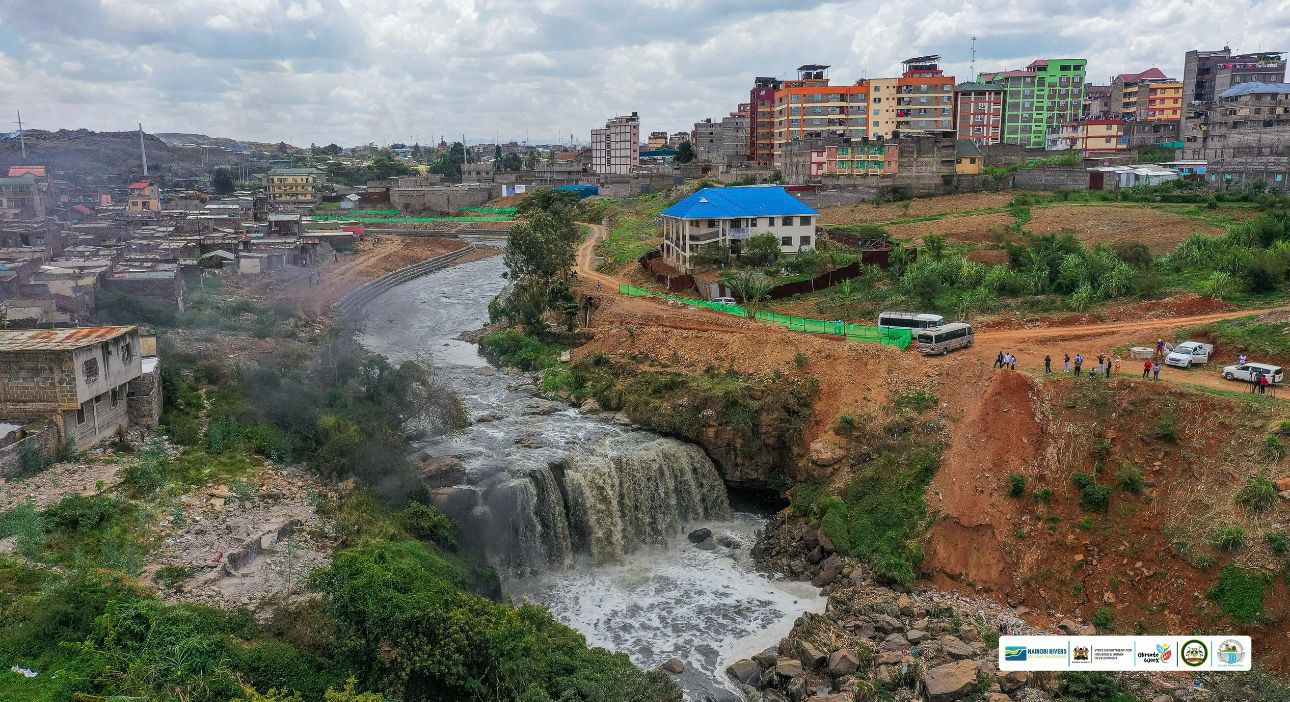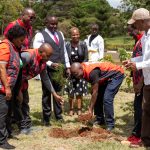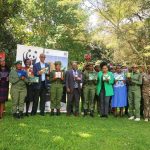Breathing Life Back into Nairobi: Ambitious River Regeneration Project Aims to Restore City’s Soul by 2027.
By Peace Muthoka.
Nairobi, October 10, 2025 — For years, the Nairobi River has been a silent witness to the city’s growth and struggle. Once a source of pride and life, it gradually turned into a channel of waste and neglect. Its murky waters and clogged banks became a painful reminder of what happens when a city forgets to care for its environment. But now, a historic mission is underway to give the river and Nairobi itself a second chance at life.
Through the Nairobi Rivers Regeneration Programme, the government has launched one of the most ambitious environmental restoration projects in Kenya’s history. With an investment of Sh45 billion, the plan seeks not just to clean the river, but to completely reimagine Nairobi turning its forgotten waterways into green corridors where families can walk, children can play, and nature can breathe again.
“This is not just a cleanup exercise,” said Lieutenant Colonel Kahigu Njoroge, the project manager seconded from the Ministry of Defence to the Nairobi Rivers Commission. “We are regenerating riparian lands, removing both solid and liquid waste, and transforming the Nairobi River into the city’s new frontage a living symbol of renewal.”
Lt. Col. Njoroge spoke during a media tour at various sites, including Kamukunji Grounds, to mark Mazingira Day 2025, where visible progress in the first phase of the project was seen. The ongoing works include a 27.2-kilometer non-motorized transport corridor stretching from Ondiri Wetlands in Kikuyu to Ruai, featuring five-meter-wide walkways and cycling lanes designed for safe daily use. Along the route, riverfront parks, community centers, and libraries are taking shape to encourage healthier living, while urban farms and access to clean water are helping to reduce disease risks.
The project focuses on five key areas flood control, waste management, infrastructure development, catchment restoration, and urban landscaping. According to Njoroge, each component plays a crucial role in repairing the years of environmental damage that have turned Nairobi’s once-lively rivers into hazards.
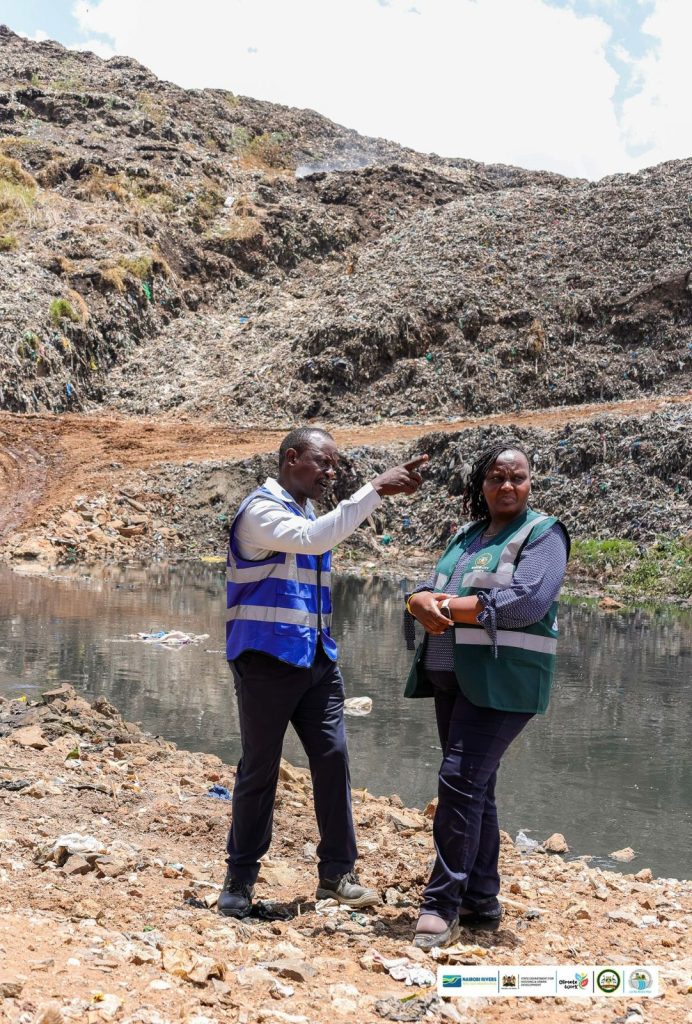
(L-R) Lt. Col. Kahigu Njoroge, Project Manager at the Nairobi Rivers Commission, and Maureen Njeri, Nairobi County Executive for Green Nairobi, stand beside the Nairobi River at the Dandora dumpsite—one of the most polluted sections now being regenerated under the Sh45 billion Nairobi Rivers Regeneration Programme, October 10, 2025
“Flooding has been a nightmare for families along the riverbanks,” he said. “We are widening the river to at least 20 meters, reinforcing the banks with gabions, and building proper drainage systems to prevent future disasters.”
To handle wastewater, a 1.8-meter trunk sewer line is being installed on both sides of the river, capable of serving the city’s growing population for the next four decades. In addition, gabion interceptors are being constructed to trap waste before it reaches the river. One of the toughest tasks lies at the Dandora dumpsite, where the river has long disappeared beneath piles of garbage.
“Unless we remove the waste and the toxic leachate it produces, the river will never recover,” said Njoroge. “That’s why this is not just cleaning up it’s regenerating an entire ecosystem.”
But beyond the engineering and construction, the Nairobi Rivers Regeneration Programme is deeply human. Hundreds of young people from neighboring communities have been employed to help with construction, landscaping, and waste collection. For them, it’s not just a job it’s a chance to take part in healing the place they call home.
“When residents take part in restoring their environment, they become its protectors,” Njoroge said. “They stop dumping because they feel proud of what they’ve built.”
At Kamukunji, one of the pilot sites, a once-barren ground is being reborn as a public park. Plans include a sports field, library, social hall, amphitheater, and playground turning the historic site into a cultural and recreational hub for the community.
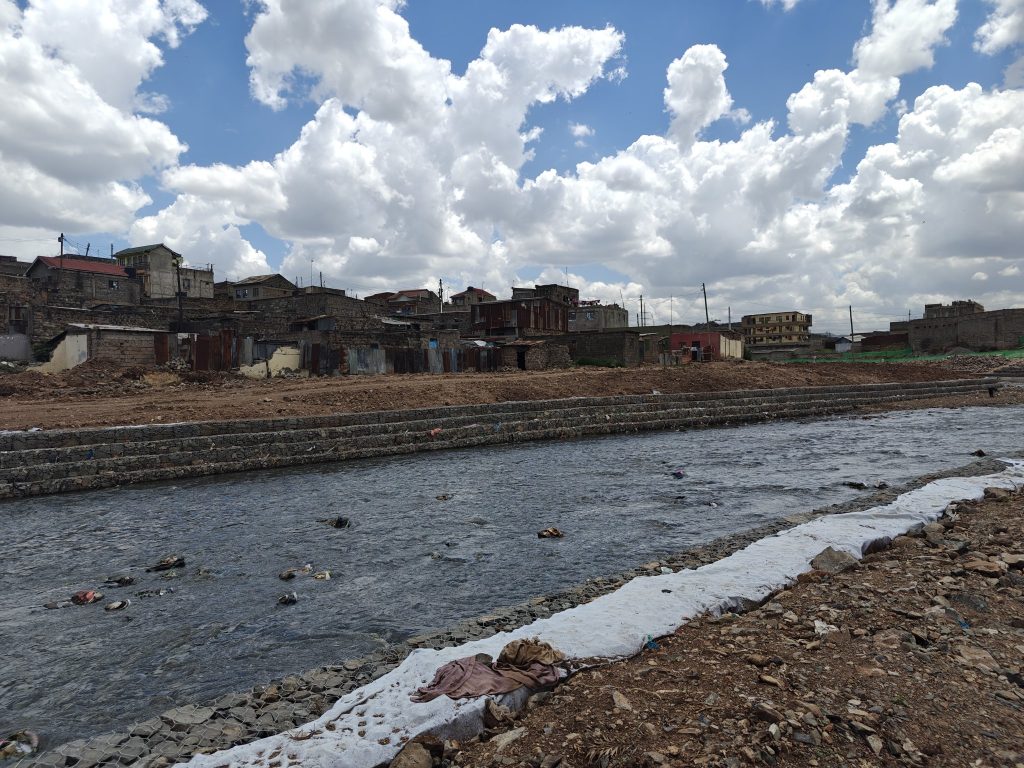
Breathing Life Back into Nairobi: Ambitious River Regeneration Project Aims to Restore City’s Soul by 2027.
“Kamukunji has always been a place of history and hope,” Njoroge reflected. “We’re giving it back to the people not as a dumping site, but as a space for recreation, dialogue, and pride.”
Nairobi County Executive for Green Nairobi, Maureen Njeri, praised the initiative, calling it a long-overdue step toward a cleaner, more livable city.
“For decades, our rivers Nairobi, Mathare, and Ngong have been choked by neglect,” she said. “This project gives us the chance to rewrite that story. Finally, the city is taking responsibility for its natural heritage.”
She explained that the county government is working closely with national agencies to make the change sustainable. “We’ve had major challenges with solid and liquid waste management, but this marks a turning point. For the first time since the 1970s, we’re expanding our sewer network and ensuring no waste flows directly into our rivers.”
The regeneration team is also partnering with the Kenya Forest Service and KEFRI to plant indigenous trees along the riverbanks. Invasive blue gums are being replaced with native species that conserve water and stabilize the soil, bringing life back to the river ecosystem from Ondiri Springs downstream.
At Gikomba Market, where hundreds of traders have operated dangerously close to the river, the project is relocating them to new, modern markets built on safer ground. “No one will lose their livelihood,” Njoroge assured. “We are rebuilding lives as we rebuild the river.”
The Nairobi Rivers Regeneration Programme is a collaboration between several agencies, including NEMA, KURA, KENHA, Nairobi Water and Sewerage Company, and the China Energy Engineering Group. It is being implemented through a whole-of-government approach, ensuring every aspect from planning to enforcement is aligned.
By 2027, the vision is clear: a Nairobi where rivers sparkle again, where children play by clean water, and where the city’s heart beats in harmony with nature.
“The Nairobi River will no longer hide behind waste and neglect,” Njeri said with conviction. “It will flow proudly through a city reborn a Nairobi that breathes, thrives, and inspires once more.”

